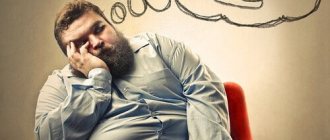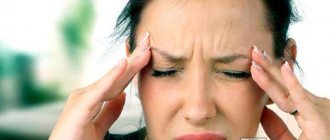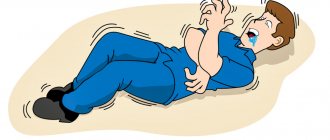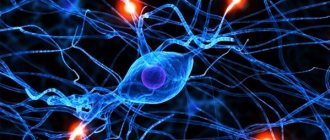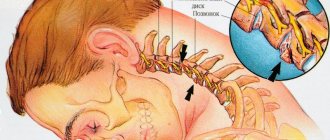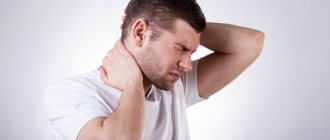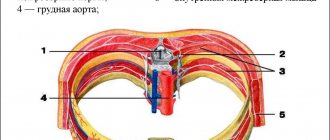More about unsteadiness
Since unsteady movement when walking can be a symptom of certain pathologies, it is important to understand what unsteadiness of gait is, what it can be, and what accompanies it.
Erratic movements are a lack of coordination that can occur all the time or appear at different times. Such changes in movements can be systemic in nature, that is, indicate abnormal disorders in the body, or be non-systemic, that is, indicate that inflammatory processes of a chronic nature are occurring in the body.
The phenomenon of unsteady gait should not be taken lightly. It may not hurt anything, but the body is already giving a signal of danger. A timely consultation with a doctor will help you avoid serious troubles.
Very often a person experiences not just instability in movements, but also some other unpleasant manifestations at the same time - headache, sudden weakness, tingling in the legs, dizziness. And this is not a mere coincidence, but symptoms of certain diseases, which, among other things, cause instability.
It is worth considering why a person staggers when walking, and why a harmless sway can signal serious problems.
Movement is carried out with the help of a strong and healthy bone structure, properly developed muscles and healthy joints. Control over the coordination of movement occurs with the help of the cerebellum, vision and vestibular apparatus.
The spinal cord carries impulses that give a “command” to the lower limbs to perform a movement. After such a “command,” the muscles begin to work, setting the entire skeletal system in motion.
But if the path of nerve impulses is disrupted, the reception and delivery of the “command” will be disrupted. Consequently, the legs will not obey at all or the gait will be uncertain.
The same can happen if there are problems with the musculoskeletal system. In this case, the legs simply will not have healthy opportunities to carry out the “command”.
If the anomaly occurs in the cerebellar zone, then the “command” itself will not be received.
Physiotherapy
In order to improve blood circulation in the neck, it is necessary to reduce tension in the muscles and ensure a constant flow of oxygen to the brain. Experts recommend physical therapy.
Conventional treatment is based on the following procedures:
- Phonophoresis.
- Magnetotherapy.
- Electrophoresis.
- Exercise therapy.
- Acupuncture.
- Therapeutic baths.
- Massage.
Therapy is aimed at stopping the underlying disease that caused the condition. The basis of treatment is calming the vestibular apparatus with medications and strengthening it with physiotherapy.
Medicines improve cerebral circulation, relieve spasms and accelerate the metabolism of vessel walls.
To combat dizziness when walking, the following groups of drugs are used:
- Alpha adrenergic blockers (Sermion, Nicergoline, Artezin).
- Antispasmodics (No-shpa, Drotaverine, Eufillin).
- Combined drugs (Vazobral, Stugeron, Instenon).
- Nootropics (Piracetam, Citicoline, Cerebrolysin).
- Vasodilators (Tanakan, Cavinton, Vesibo).
- Antihistamines (Suprastin, Loratodin, Promethazine).
- Means to improve brain function (Glycine, Undevit, Aminalon).
- Vitamin complexes (Reomacrodex, Ascorutin, Parmidin).
- Homeopathic (Cavinton, Vinpocetine, Telektol).
Disease categories
Based on the above, doctors divide all diseases whose symptoms include staggering into 3 categories.
Category 1 – this includes diseases that are associated with impaired functioning of the musculoskeletal system, diseases of the musculoskeletal structure, joints, and circulatory disorders.

Category 2 – pathology of those areas of the brain that are responsible for coordination of movements and control the functioning of the entire motor system.
Category 3 – psycho-emotional disorders.
1 category
Unsteadiness when walking may occur due to the following reasons:
- spinal injury;
- traumatic brain injury;
- injuries and bruises of muscle tissue in the lower extremities;
- osteochondrosis – when intervertebral discs are affected;
- amyotrophy;
- leg diseases, including foot deformities;
- arthritis;
- damage to cartilage tissue of varying severity;
- violation of bone structure.
Category 1 diseases occur due to injuries, due to improper blood circulation, as a result of which insufficient oxygen and nutrients enter the muscle tissue, the muscles are depleted and are unable to perform their functions. Instability in movements appears, the person’s legs give way, the patient becomes dizzy and staggers when walking, nausea is observed, and the general state of health is unsatisfactory.
2nd category
The 2nd category includes pathologies in the spinal cord and brain, which, during their development, disrupt the proper functioning of the lower extremities. The brain cannot control and send the necessary signals, so the motor processes of the lower extremities become weak.
This happens in the following diseases:
- stroke (hemorrhagic type);
- oncological brain damage;
- vegetative-vascular dystonia;
- purulent formations and inflammation in the brain;
- atherosclerosis;
- neurodegenerative disease, when it occurs against the background of mental complications and hyperkinesis (choreic type);
- dysfunction of the central nervous system;
- congenital anomaly of the structure and location of the cerebellum;
- meningitis;
- Parkinson's disease;
- infection with Treponema pallidum, resulting in damage to the central nervous system;
- inflammation of the inner ear;
- improper use of neurotoxic drugs, resulting in the development of polyneuropathy;
- encephalomyelitis.
With any of the above diseases, not only swaying during movement or gait disturbance is observed, the patient also has a very serious general condition.
3 category
If you stagger when walking, then mental disorders may also be the cause. It could be:
- stress, nervous breakdowns;
- depression, which leads to a depressed state of the whole organism;
- the presence of inexplicable, groundless fears and anxiety;
- neuroses;
- impaired perception of surrounding reality.
Alcohol poisoning
Separately, it is worth considering poisoning with alcohol or other substances.
Quite often you can observe a sharp change in gait, and other movements, after drinking alcohol. After a few minutes of feasting, a healthy person begins to feel a storm. There is an explanation for this.
After alcohol enters the gastrointestinal tract, it is distributed through the blood throughout the body, including muscle tissue and the cerebellum. 20 minutes after consumption, the highest concentration of alcohol in the blood can be observed.
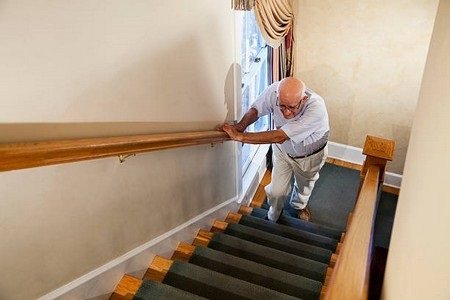
It is known that the intoxicating effect of alcohol is much stronger in women than in men. This is due to the fact that women have more fatty tissues in their bodies, and alcohol does not dissolve in them. All the power of alcohol is directed towards muscle mass, which is why intoxication is more pronounced.
Once alcohol enters the body, its decomposition begins. This releases an active toxic substance – acetaldehyde. It has a detrimental effect on the cerebellum, as a result of which the floor begins to sway under the feet of a drunken person, the gaze becomes cloudy, severe staggering occurs when walking, and the next morning suffers from headache and nausea.
Some relatives or friends, wanting to alleviate the condition of a drunk person, offer medications.
Taking any medications, such as painkillers, at the same time as alcohol is strictly prohibited! The results can be detrimental to your health.
In addition, you can independently help a victim of alcohol poisoning only in the first two stages, that is, with mild or moderate intoxication. The third stage - severe poisoning - should be treated only under the guidance of a doctor. Therefore, if severe poisoning occurs, it is best to call an ambulance.
Elderly age
It is rare to find a person over 60 years of age who does not feel a slight swaying and who does not have “flies” flashing before their eyes. Sometimes older people experience tinnitus and dizziness when walking. Attacks of acute headaches also occur, sometimes even fainting and even falls. But rarely does anyone pay attention to this. It is believed that this is a normal phenomenon, a remnant of age, and no treatment is required.
Meanwhile, an elderly person wants and can live fully and lead a normal lifestyle. You just need to go to a specialist to diagnose the causes of impaired coordination of movements.
One of the predisposing factors is insufficient functioning of the cerebral vascular system. Atherosclerosis appears, that is, a disease from the second category, which affects the coordination of gait.
Very often, due to age, the functioning of the vestibular apparatus is disrupted.
Affects gait and heart disease. Ischemia can lead to impaired blood circulation in the area of the ear where the balance organ is located. And insufficient blood circulation will lead to disruption of confident movements. Arrhythmia and arterial hypertension will also have a negative effect on the body.
Blood viscosity also affects gait. The flow rate, and therefore the rate of oxygen delivery to all parts of the body, including the cerebellum, depends on it.
Intervertebral hernias, osteochondrosis of the cervical spine - all this will complicate the transmission of signals along the nerve endings to the brain, therefore disturbances in stepping movements are possible.

In addition, sleep is often disturbed with age, and this can lead to diseases of the above-mentioned 3rd category.
There is also such a reason as socio-psychological disadaptation. This is the area of psychosomatics. That is, an elderly person feels insecure, does not see his own importance, he underestimates his physical and psychological capabilities. He develops a feeling of uselessness, fears, phobias, and increased nervousness arise. As a result, the head may become dizzy, it begins to skid when walking, it often becomes dark in the eyes, and the state of health worsens every day. It is imperative to get rid of this condition. It is best to turn to professionals. Otherwise, there may be very serious consequences.
As you can see, there are many reasons for an unsteady gait. And yet, all these factors are not at all a reason to refuse treatment.
If the cause is eliminated, there will be no consequences. That is, life will be full and healthy. Therefore, it is necessary to undergo treatment, regardless of the years lived.
Worth being wary
Since incoordination is not as harmless as it may seem, you should immediately consult a doctor if the following signs appear:
- stumbling became more frequent, often on a completely flat surface;
- weakness occurs in the legs, which leads to a fall;
- for some unknown reason, coordination of movements is impaired, the motor process is poorly controlled;
- the gait becomes unnatural, sweeping;
- after a long walk, a sudden stop occurs and there is a feeling that the next step is impossible to take;
- due to muscle weakness, the legs become weak, you can only walk on bent legs;
- when walking, the body falls to one side;
- difficulties appear when walking up the stairs;
- When walking, the foot rests more and more on the heel;
- when you want to get up from a sitting position, you fall;
- after the legs have rested for a long time, movement becomes tense and difficult.
At the same time, a tremor of the whole body may appear, the head may begin to spin, a pounding in the temples may appear, the vision will darken, the outlines of objects will be blurred or split into two. Such a rapid onset of an inexplicable condition causes panic, nervousness, and fear.

These are pronounced symptoms of certain diseases and cannot be ignored.
Serious causes of dizziness
Dizziness and lack of coordination are caused by 2 mechanisms:
- The 1st mechanism is very complex, it operates at the level of the inner ear, and an ENT specialist is involved in studying it and determining the diagnosis. The inner ear has a complex structure in which various disturbances can occur, correlating with the position of the head and the 3 canals in the inner ear, perpendicular to each other. They contain fluid, endolymph. When an imbalance occurs in the inner ear, the sense of stability in space is disrupted, vertigo, spatial disorientation, and unsteadiness of gait occur. The condition may be sudden, severe, short or long-lasting.
- The 2nd mechanism is neurological. Dizziness and imbalance are caused by disruption of the nerve pathways that lead impulses from the inner ear through the medullary stem to the brain structures, to the cerebral cortex. Such vertigo is accompanied by a typical neurological picture.
How can a doctor help?
It is impossible to make a diagnosis on your own when the patient sways from side to side. Diagnostics are carried out only by specialists. Doctors use a number of methods to accurately determine the root cause of the phenomenon, the first of which is observing the patient’s movements. For example:
- look at the movement in the direction forward with the face, forward with the back;
- movement in a straight line forward with the left side, then with the right;
- change the rhythm of the step from fast to slow and vice versa;
- gait with eyes closed is examined and compared with gait with eyes open;
- walking up the stairs;
- circular motion (for example, around a chair);
- offer to make turns while walking;
- consider walking on toes and heels.
Based on the results obtained, the patient is prescribed:
- undergoing an MRI;
- CT;
- X-ray;
- general and biochemical blood test;
- a referral is given for a study of the liquor fluid;
- a biopsy of muscle tissue is performed;
- stabilography is performed.
In addition, the patient is sent for examination to an otolaryngologist, ophthalmologist, or endocrinologist.
Only after completing all these procedures will the patient be given an accurate diagnosis and treatment prescribed.
Even folk remedies should be taken only after consultation with professionals.
Any medications must be prescribed by a licensed physician. He will select medications based on the individual characteristics of the body. What helps one person can cause irreparable harm to another.
Who to contact
Often the patient himself understands that specialist help is needed. But it’s not always clear which doctor to contact. Therefore, you need to carefully listen to the symptoms, and based on this, choose a doctor.
- cardiologist – if, in addition to gait disturbances, there is often high blood pressure, or there are diseases of the cardiovascular system;
- neurologist - you need to go to him when you experience stress, nervous disorders, and other mental manifestations;
- traumatologist, orthopedist – for injuries, muscle or joint pain;
- surgeon – needed for serious injuries.
If you have not been able to identify the symptoms on your own, or you are not sure of the correct definition, that is, it seems that there are signs of several diseases at once (this happens when the heart hurts from nervous stress), you need to consult a therapist.
help yourself
Is it possible to help yourself on your own, at home? Can. But you should not self-medicate; it is best to prevent the possibility of the occurrence of such diseases than to treat them for a long time.
Injuries are difficult to insure against. However, you can make your body more resilient. The following factors will help to achieve this:
- proper nutrition (for the strength of the bone structure);
- walks in the fresh air (to saturate the blood with oxygen);
- regular ventilation of rooms;
- hardening the body to strengthen the immune system (this will protect against many diseases and their complications);
- systematic visits to the clinic for preventive examination;
- rejection of bad habits;
- correct daily routine;
- training to manage your emotions (to avoid depression and nervous breakdowns);
- reasonable alternation of calm and active activities;
- massage;
- playing sports and exercising to strengthen muscles.
Several special exercises have been developed that can be performed anywhere and by people of all ages.
- In transport, it is better not to sit on an empty seat, but to stand with your legs wide apart, trying not to stagger when traffic moves and to maintain your balance.
- Place your feet together and extend your arms forward. Rise and fall on your toes, closing your eyes. Repeat several times.
- Arms to the sides, legs together. Stand with your eyes closed for 30 seconds, then lower your arms and stand in this state for 30 seconds.
- Hands on the belt, legs together. Rise on your toes, simultaneously tilting your head forward, then back.
- From the same position, bend your whole body forward and backward, then to the sides. Rotate your torso.
- Do exercise No. 5 with your eyes closed.
- Place your left foot with your toe towards the heel of your right foot. Stand in this position for 15-20 seconds. Then change the position of your legs.
- Perform the “swallow”. In this case, it is not so important to ensure that the leg is raised high, the main thing is to maintain balance.
- Raise your leg first to the left and then to the right, in a slow rhythm. There is no need to raise your leg high, the main thing is to maintain a stable balance.
- Try yourself as a juggler. Throw up and catch an apple or orange with one hand. If the result is successful, you can toss two fruits alternately.
- Walk exactly along one floorboard. The floorboard can be drawn with chalk. You can simply try to walk along the supposed straight line. Repeat the same movement with your eyes closed. The main thing is that the intended line is smooth (with your eyes closed, it is important that there is an outside observer).
- Don't miss curbs on the street - walk along them.
These simple exercises will help not only maintain coordination of movements of the whole body, but also increase your own confidence in your health.
Treatment and prevention with exercises
It is recommended to use light exercises as treatment and prevention:
- Sit up straight on the sofa. Look ahead, legs extended forward. Next, lie sharply on your back, look up, turn over to your right side, look forward and down, turn over to your left side. Roll over onto your back and stand up quickly.
- Stand straight, look forward, turn to the left, focusing on the heel of your left foot. Turn to the right, focusing on the foot of your right foot.
- Sit on a stool, lean forward and down a little. Straighten up and turn your neck to the left. Bend forward, straighten up again and turn your neck to the right. Sit on a stool and twist your neck left and right several times. Tilt your head several times
- Take a pillow and sit on the bed. Stretching out my legs. Turn onto your back. Look to the right and quickly return to your original position. Do the same, only turn your head to the left.
In another article we talk about gymnastics for dizziness in older people.
To prevent dizziness when standing up and walking, exercises that can be used for treatment and prevention help:
- You need to sit straight on the sofa. Your gaze should be in front of you, your legs should be stretched forward. Then you need to lie sharply on your back, look up, turn over to your right side, look forward and down, turn over to your left side. Then you need to roll over onto your back and stand up sharply.
- You need to stand up straight, look forward, turn to the left, focusing on the heel of your left foot. You should turn to the right, focusing on the foot of your right foot.
- You need to sit on a stool, lean a little forward and down. You need to straighten up and turn your neck to the left. Leaning forward, you need to straighten up and turn your neck to the right. You should sit on a stool and twist your neck left and right several times. You need to tilt your head several times.
- You should take a pillow and sit on the bed. You need to stretch your legs, turn on your back, look to the right, and take the original position. The same thing is done, but the head must be turned to the left.

